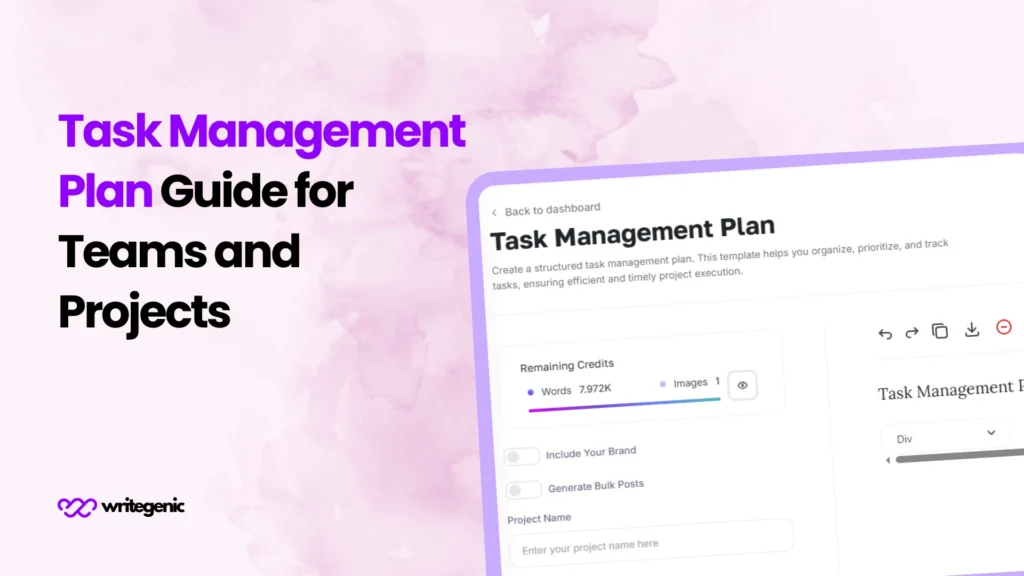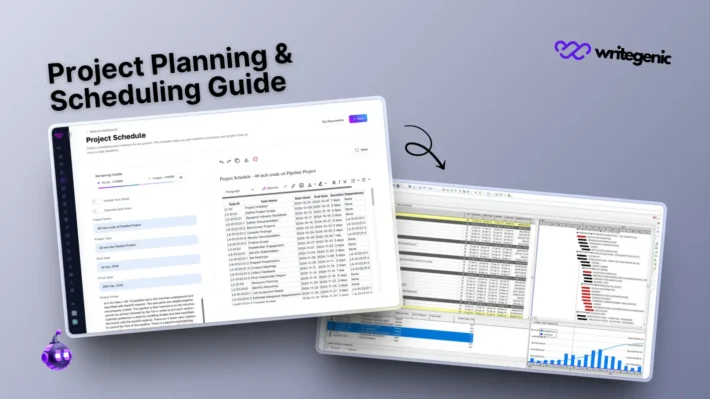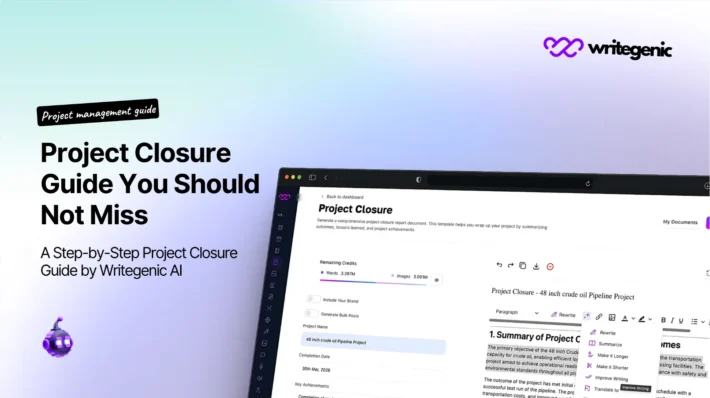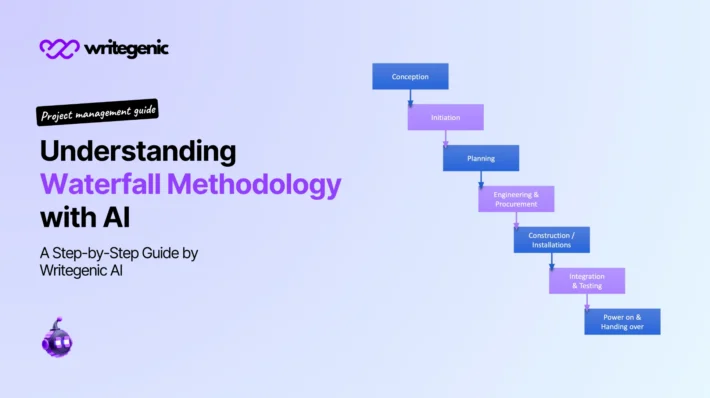Task Management Plan Guide for Teams and Projects

Task management is not just assigning tasks. It is also about creating a complete plan which will allow the teams to work the best, meet the deadline and, more importantly, accomplish project goals. The purpose of a Task Management Plan is to give teams and employees clarity, organization and ultimately productivity as it pertains to the execution of tasks. A Service Task Management Plan is vital, whether you are leading a small team or managing a large cross functional project.
In this article I will expand on the basics of a Task Management Plan telling you about its key components and the ways in which it can improve team task management and task monitoring and tracking. We will also give you best practices so that your plan gets the result that you want.
Table of Contents

What is a Task Management Plan?
A Task Management Plan is a framework in which tasks within a project plan will be managed, tracked and completed. It is the document that contains the elaboration of project roles, responsibilities, deadlines and resources necessary in order for the project to run successfully.
It shows us key milestones, how to track or gauge the progress, as well as the communication protocols to keep the teams organized, on task and in line with the project goals. If a proper task management plan is not implemented, delays, poor coordination and deteriorated communication patterns could arise that will hinder project results in the end.
Why is a Task Management Plan Important?
Teamwork and the successful running of the project start with the Task Management Plan which is more specific than simply a checklist. If team management is lacking, teams usually experience disorganization, unsure roles, missed deadlines and bad communication.
Here we cover several reasons teams and projects need a task management plan:
1. Aligns Team Goals and Priorities
Whenever team members have a strong task management plan, they move toward achieving the project’s objectives. All team members understand what is expected of them, by whom and when it should be completed. Proper alignment results in better team work when different individuals handle different parts of a single project.
2. Enhanced Productivity
With a clear plan, managers and team leads can monitor tasks and immediately recognize problems if they arise. A visual representation of task status makes it easy for teams to decide which actions to take.
3. Increases Accountability and Ownership
If each task is clearly set out and given to the right person, workers will take greater responsibility for their tasks. Because of this, teams are held more accountable and their success improves.
4. Improves Time Management and Efficiency
Setting goals with a deadline helps teams to handle their work more effectively. With a task management plan, the team members are not burdened which helps them stay productive.
5. Supports Scalable Growth
Having a task management plan helps you succeed again and again, whether you are working with a few people or across departments. This makes it an important factor in any strategy lasting more than a short time.
6. Enhanced Communication
Good task management helps create open and transparent communication. All those working on the project can view and track the status of tasks. Being clear enhances cooperation and prevents students from misunderstanding each other.
All in all, a task management plan ties together the other elements in your project. It guarantees that no important details are missed and everyone on the team works toward the same target, effectively and confidently.
Key Elements of a Task Management Plan
When preparing a Task Management Plan, it is necessary to carefully examine important elements. Let’s look at what each section of your plan must contain:
Task Definition and Scope
Set out all tasks with their objectives, results you hope to see and the resources you will need. As a result, everyone is clear about the job and is able to complete it successfully.
Task Assignment and Accountability
Distribute tasks among the team so that each person uses their abilities and works at their capacity. Assignments that work make sure that individuals are responsible for what they need to do. You can also use task management applications to make this process more efficient.
Task Timelines and Deadlines
Impress upon the team to set achievable milestones for the project. Tools such as Gantt charts, kanban boards or dedicated software should be used to represent tasks’ timelines and check that the team follows schedules.
Task Monitoring and Tracking
Make sure that progress on tasks is regularly checked. If you monitor tasks, you will notice any problems quickly and using task tracking helps you address them in a timely manner. This immediate insight is needed to keep the project moving smoothly.
Resources and Dependencies
Identify every resource and all the connections between different tasks. It is vital to know which resources are available and what tasks are related to prevent slow progress and blockages during the project.
Benefits of a Task Management Plan for Teams
It is very important for a Task Management Plan to be clear and comprehensive for many reasons. This is why it brings incredible benefits for teams and their projects.
Improved Organization
When things are listed clearly, team members will find it much simpler to evaluate their duties. Since all tasks are accessible in one spot, team members can easily review what they must do and remain disciplined.
Increased Accountability
With a well-structured Task Management Plan, people are given certain tasks that automatically makes them more accountable. Having clear responsibilities and deadlines helps people to stay active and motivated in their work.
Better Resource Allocation
Managing your tasks well helps you use resources such as labor, time or money, wisely. Sharing tasks equally, giving needed resources to teams and making sure no team becomes overworked can increase productivity.
Enhanced Communication
Good communication ensures a project runs smoothly. It encourages employees to share information since there is a clear plan for keeping everybody updated. Keeping in touch and updating each other frequently helps solve any issues or problems that arise and prevent project delays.
Risk Mitigation and Early Detection
Being aware of what needs to be done and when and constantly monitoring your project, allows you to find risks early on. If you intervene early, you may avoid problems that could lead to threats to the project.
Best Practices for Task Management Plan
While creating the plan is vital, making sure you use best practices can greatly improve its efficiency. Here are some techniques that have worked for many students:
Use the Right Tools
Advanced task management software such as those from WriteGenic AI, can help you manage tasks effectively. They allow task assignment, follow progress and provide smooth communication, all from one central area.
Thanks to automatic reminders, notifications and instant updates, WriteGenic AI guarantees that everything is done at the right moment, maintaining the order of your assignments.
Break Tasks into Manageable Chunks
Being overloaded with work can make anyone hesitate and take longer to start. Work on managing smaller parts of a bigger task. Because of this, team members remain concentrated and steady progress is always achieved.
Prioritize Tasks According to Urgency and Importance
Certain tasks are more important than others. Arrange your tasks according to how urgent, important and impactful they are for the project. Organize tasks according to importance using the Eisenhower Matrix or label them as high, medium or low priority.
Review and Adjust the Plan Regularly
Since projects change over time, the Task Management Plan needs to be flexible. Check your team’s progress often, find out if any tasks are blocked and readjust timelines or who is in charge of specific work. With such an approach, you can quickly respond to any changes.
Foster a Collaborative Environment
Make sure team members communicate and collaborate in an open manner. Regularly checking in with the team, having meetings and providing updates can make sure no one misses important developments in the project. Teamwork helps ensure that tasks are easily handled and completed.
Conclusion
Having a strong Task Management Plan increases the chances of a project being successful. It allows you to see how work will be organized, distributed to people, monitored as it flows forward and assessed. When everyone understands what is required, has realistic due dates and access to the right tools for managing jobs, your team can be more efficient, lower possible risks and achieve what is needed.
The guidelines described here will help you design a detailed Task Management Plan that promotes teamwork, makes monitoring tasks easier and keeps all projects on track.
Frequently Asked Questions
How do you prioritize tasks in a Task Management Plan?
Management considers time, significance, relay on other activities and available tools to determine which tasks come first. You can choose from systems such as the Eisenhower Matrix or grouping tasks by priority levels to decide on urgent tasks.
What are the 5 main points of task management?
The main steps in task management are figuring out the tasks, setting their importance, sharing the work, watching progress and finish them. In carrying out these steps, each job is easy to understand, arranged by priority, assigned to those qualified, monitored for timely completion and done properly.
How do you write a task plan?
Begin your task plan process by making a list of the tasks you have to complete to accomplish your objective. The following step is to arrange these tasks by priority, give them to the best individuals, provide deadlines and organize tracking them. In the end, monitor the progress and make changes to the plan when necessary.
What are the 4 elements of task management?
There are four parts to task management: resources, time, money and scope. People and tools are resources, time refers to when things should happen, money involves how much is being spent and scope sets the specific tasks and outcomes.


